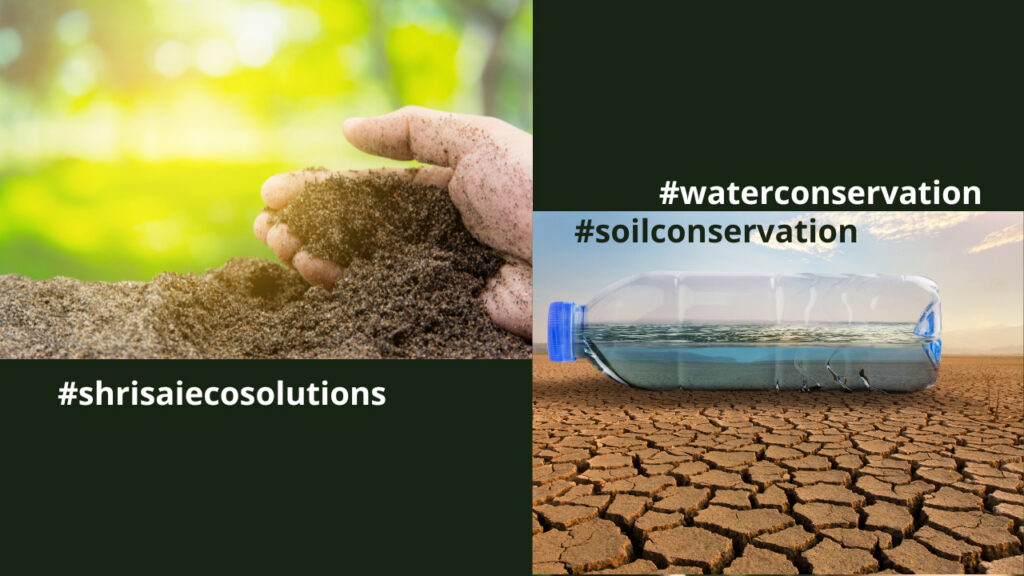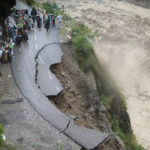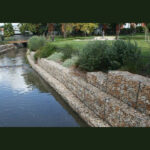Soil and water conservation are those activities at the local level which maintain or enhance the productive capacity of the land including soil, water and vegetation in areas prone to degradation through:
- Prevention or reduction of soil erosion, compaction, salinity;
- Conservation or drainage of water and
- Maintenance or improvement of soil fertility
Practice Soil & Water Conservation
*Water is a precious commodity. Humans extract it from the ground and as a result, the water table may drop, damaging habitats miles away. We divert water from rivers and lakes which reduces flow rate, possibly impacting fish, herons, otters, mussels, and thousands of other kinds of wildlife.

*Further practices including: crop rotation, reduced tillage, mulching, cover cropping and cross-slope farming can help #conservesoil. Farmers to increase soil organic matter content, soil structure and rooting depth.
Why Soil and Water Conservation?
Land and Water are natural resources that are basic resources essential for the existence of life and are the two important factors for which appropriate management is most essential to ensure continuity of life. Land provides food, fuel, fodder and shelter besides providing physical support and other life support system. However there has been a continuous depletion of land resources due to various land degradation processes like soil erosion, large scale deforestation, reckless mining activities, overgrazing, general mismanagement, improper utilization, etc. Such processes lead to degradation and deterioration of soils physical property, inhibiting farm production and productivity.

It takes nature 600 – 1000 years to form 1.0 inch of top soil but the same amount of soil gets eroded in a very easily in 2-3 rainfall events due to lack of conservation and improper utilization. As a result, erosion by water becomes the single most harmful factor in the deterioration of productive land of the state, affecting about 31% of the total geographical area. It has been reported that 14.15 million tons of productive soil is lost every year from the state (Sharma et al, 1995). It has also been estimated that soil lost from unprotected cultivated land is about 120 tons /ha/yr and may go as high as 300 tons /ha/yr.
Thus, apart from the depletion of fertile soil, erosion results in the loss of plant nutrients and organic matter, siltation of reservoirs and river beds thereby adversely affecting irrigation and power potential; causing floods in plain and valley which damage crops, animals, habitation, communication etc. But most of all it adversely affects agricultural production, forest stand and availability of water both for irrigation and drinking besides bringing about a disturbance in the ecological balance.
Some Major Steps Already Being Taken Towards Soil & Water Conservation Include:
- Close to 30% of BMC gardens have got #harvesting percolation pits over the last year. This means rain water, which otherwise goes down the #drain, stored in the pits and can be used for garden maintenance through the year.
- Ministry of #JalShakti is taking up a nation-wide campaign “Jal Shakti Abhiyan: Catch the Rain”(JSA:CTR) focusing on saving and conserving rainwater with the theme “Catch the rain, where it falls, when it falls” from 29 March 2022 to 30 November 2022 in the pre-monsoon and #monsoon periods of 2022, covering both #urban and #rural areas of all the districts in the country.

- Intensive #afforestation works were undertaken in the multiple forest regions of #Kerela.
- Adaptation of Drip Irrigation across the nation are helping farmers to grow vegetables throughout year apart from contributing to #waterconservation.
- Punjab cabinet okays quality control wing for soil & water conservation department to control proper designing of #underground pipelines, installs drip and sprinkler systems for irrigation-water-use efficiency, builds water #harvesting structures, and constructs rooftop rainwater harvesting systems and check dams for #groundwater recharge.

- Application of Flexible #Gabion Structures for #RiverProtection: The erosion of the river bed or of a bank can strongly modify the soil stability both from the #geotechnical and #Geomechanical point of view. Generally, erosion happens at the toe of a bank. And, the river protection work happening at various parts including #Maharashtra and North-East are contributing to soil erosion control in turn towards soil & water conservation.
Talking of Marathwada- A drought-prone region dealing with Water & Soil Conservation–
#AURANGABAD, #Marathwada, which is considered a drought-prone region headquarters the Soil and Water Conservation Department of Maharashtra. We have got some very interesting facts from this department like the below:


Based on the data above, the main objectives of the department are:
1) To decrease the erosive velocity of runoff water
2) As per Geographical phenomena to Planning reduce soil erosion
These are following proposed activities and awareness programs to achieve the above objectives:

Need of hour & Challenges…
“Saving soil health will lead to water conservation as soil with good organic content will require less water for agriculture”, said Sadhguru Jaggi Vasudev.
The declining trend of groundwater level in all parts of the country also indicates that the assured supply of good quality water will become a concern for country’s development. Hence holistic management approach of soil and water resources by linking social and economic development with protection of natural ecosystem is the need of the hour. Creation of inventory on soil and water resources, use of modern technological tools for developing conservation strategies, changes in policy to protect natural resources, development of site-specific soil and water conservation measures and involvement of local people in conserving the soil and water resources are the future challenges for the scientists and policy makers.





